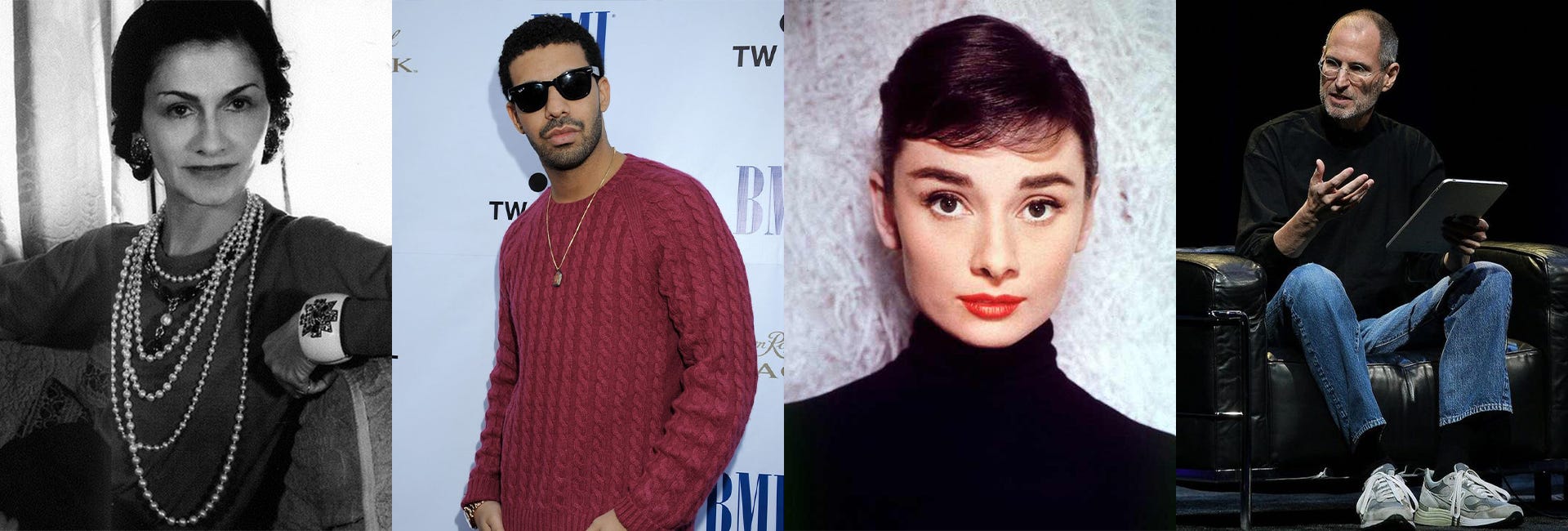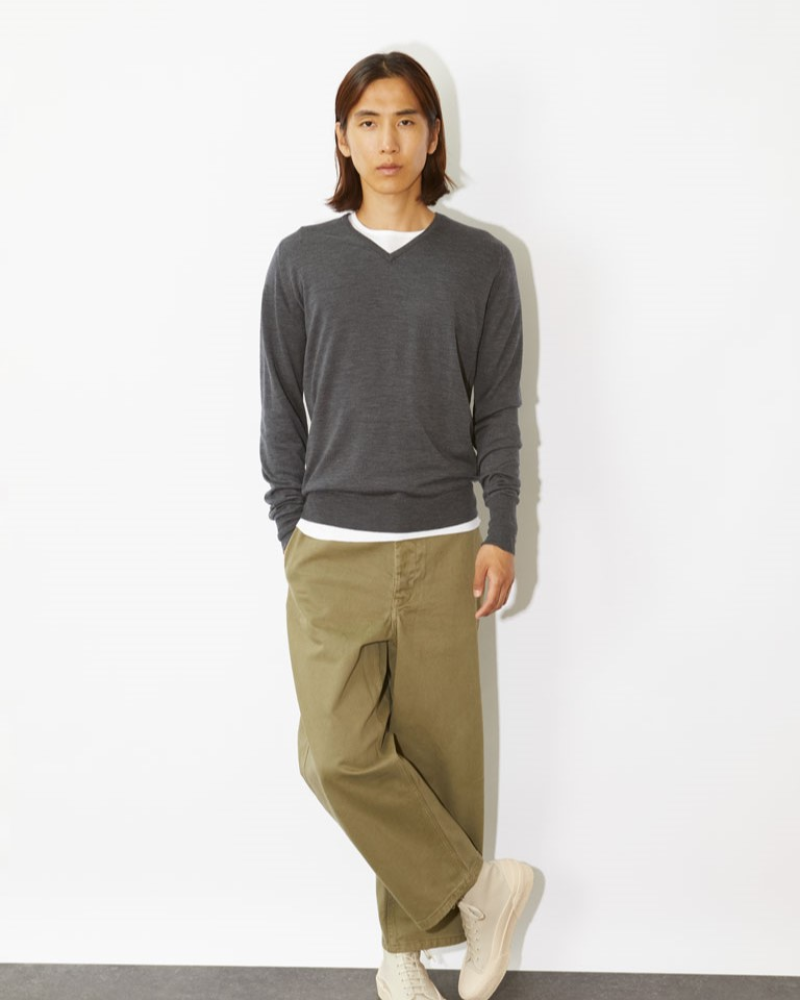A jumper is one of the most diverse pieces of clothing in the Western closet. If this garment was to be personified, there would be a version for almost every kind of person. There are the playfully exuberant designs that are sartorial extroverts; there’s the understated designs that could reflect both introverts and minimalists. Some are extroverted-introverts: playful sleeves or a patterned Fairisle yoke found upon a simple navy knit. Aesthetically, many are traditional, while others are more liberal: there’s a jumper no matter your politics or preferences.
And, just like people, they come in all shapes and sizes, there are cropped and short-sleeved styles, and while some are fitted like a second-skin, others are slouchy and oversized, and ideal for wrapping oneself in. Some are crafted from cotton; others are knitted. Some have V necks, others are crewed, and many have a roll neck — the latter with its own diverse fan base, from The Beatles, who reportedly wore knits by John Smedley, to Catherine Deneuve, Stormzy and Drake.
When you think about it, it’s perhaps surprising just how vast the varieties of this garment are: this ordinary item in our closet is so present, we barely think about how it came to actually be there in the first place. Much like a solid pair of jeans, which were invented for manual workers in the US and have since become ubiquitous, the jumper has evolved into a mainstay for every eventuality, whether you’re camping in the countryside, enjoying lunch al fresco in the Mediterranean, heading to a smart-casual city dinner — or simply just living everyday life. A sweater is the one item that’s thrown into a bag at the last minute. It’s that go-to piece, just in case.
What isn’t surprising is that the jumper, like jeans, has its roots in utility. The earliest iterations were designed to be worn under chainmail on the medieval battlefield: more modern styles were designed for fishermen and sailors in the 1850s, the jumper, as it was then known, was a sturdy pullover knitted by mariners’ wives to protect them from the whip of the sea on deck: wool, unlike other fibres, kept them warm even when damp. Early iterations, worn in colder climates like the UK and the Nordics, were chunky knit, like John Smedley’s Cornwall, crew-neck style. Others were replete with rugged, turtlenecks to ward off the chill.
It became the ‘jumper’ in the 1890s, when it was adopted by athletes in the USA: the dark navy pullover was a go-to for competitions, worn before and after a race. And it is here where its growth in sporting circles began: the cricket jumper was born, with a deep V neck and contrasting stripes. In golf, it was patterned with Argyle knit — its diamond-like motif is forever proffered by knitwear and luxury brands today. Meanwhile, the Aran knit has become synonymous with the tactile escapism of that country-coastal way of life: no surprise it features in the urbanite closet. Pull it on and escape: if only the cable patterns were imbued with the scent of the sea.
The jumper is a style that’s ripe for reinvention. And much like hemlines and trouser silhouettes, for women, the en vogue style of jumper has evolved with the era. In the Twenties, Schiaparelli and Chanel elevated the jumper into the couture realm, with Chanel offering plain black crew necks accessorised with feminine neckties that rendered them cocktail appropriate. In the Thirties, American actress Lana Turner was discovered wearing a tight sweater — it sparked a “sweater girl” trend that saw slinky knits adopted by young women the world over. During the wartime years of chilly austerity, these jumpers were layered with cardigans: the twinset was born. Then came the Fifties’ focus on the simple black roll neck — popularised by Left Bank bohemians and Hollywood artists like Audrey Hepburn and Marilyn Monroe, who both favoured a John Smedley’s Catkin merino knit. Understated and straightforward, it was the uniform of intellectuals and creatives at the time. Steve Jobs revisited this notion in the early Noughties, when his Apple brand offered a modernist take on tech far removed from the chunky and clunky echelons of Microsoft.
Each decade offers generations the chance to rediscover the jumper anew. And its silhouettes have shifted from baggy to fitted, chunky to slimline, like a sartorial pendulum, forever in flux with youth culture, the economy and the climate.
That’s why the jumper today remains as relevant as ever. There are sober styles that feel enduringly sturdy, or others that can bring a smile on the greyest of days. Today, you can dress for your mood or the moment, whatever the weather, whoever you are.







%20(1).png)
%20(1).png)
.png)

